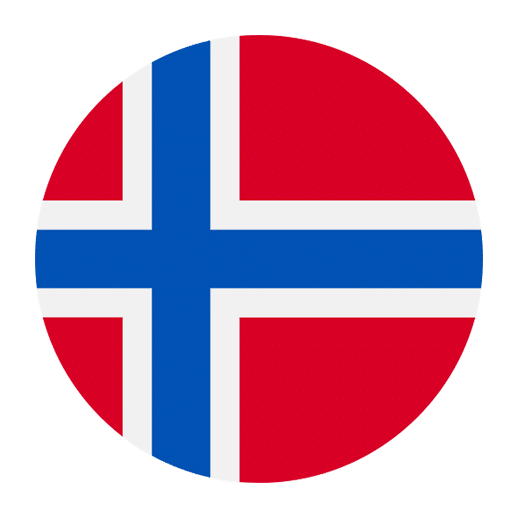Learning a new language is not just about mastering grammar and vocabulary; it’s also about understanding the culture and daily life of the people who speak it. One way to bridge this cultural gap is by learning about common hobbies and leisure activities. In this article, we’ll explore how to talk about hobbies and leisure activities in Norwegian. Whether you’re a beginner or looking to expand your conversational skills, this guide will help you discuss your favorite pastimes with native speakers.
Common Norwegian Hobbies
Norwegians, like people everywhere, have a variety of hobbies they enjoy. Here are some of the most common ones:
Friluftsliv (Outdoor Life)
One of the most cherished aspects of Norwegian culture is friluftsliv, which literally translates to “outdoor life.” This term encompasses all activities that involve spending time in nature, such as hiking, camping, and skiing. Norwegians have a deep connection to their natural surroundings, and it’s common for families and friends to spend weekends exploring the great outdoors.
To talk about your love for outdoor activities in Norwegian, you might say:
– Jeg liker å gå på tur. (I like to go hiking.)
– Jeg elsker å campe i fjellet. (I love camping in the mountains.)
– Jeg går ofte på ski om vinteren. (I often go skiing in the winter.)
Lesing (Reading)
Reading is another popular pastime in Norway. Whether it’s fiction, non-fiction, or newspapers, many Norwegians enjoy curling up with a good book, especially during the long winter months.
To discuss your reading habits, you could use phrases like:
– Jeg liker å lese bøker. (I like to read books.)
– Favorittforfatteren min er… (My favorite author is…)
– Jeg leser mye om historie. (I read a lot about history.)
Strikking (Knitting)
Knitting is a traditional and still very popular hobby in Norway. Many people knit their own sweaters, scarves, and other garments, often featuring intricate patterns.
You might say:
– Jeg liker å strikke gensere. (I like to knit sweaters.)
– Jeg lærte å strikke av bestemoren min. (I learned to knit from my grandmother.)
Leisure Activities
Apart from hobbies, there are also various leisure activities that Norwegians enjoy during their free time.
Kino (Cinema)
Going to the cinema is a popular leisure activity, especially in urban areas. Norwegians enjoy both local and international films.
To talk about your movie-going habits, you can use:
– Jeg går ofte på kino. (I often go to the cinema.)
– Jeg liker å se filmer på kino. (I like to watch movies at the cinema.)
– Favorittfilmen min er… (My favorite movie is…)
Sport og Trening (Sports and Exercise)
Physical fitness is highly valued in Norway, and many people engage in various sports and exercise routines. Whether it’s running, cycling, or going to the gym, staying active is a big part of Norwegian life.
You can express your interest in sports and exercise with phrases like:
– Jeg trener på treningssenteret. (I work out at the gym.)
– Jeg liker å sykle. (I like to cycle.)
– Jeg spiller fotball med vennene mine. (I play football with my friends.)
Language Tips for Discussing Hobbies
When talking about hobbies and leisure activities in Norwegian, it’s helpful to know some key phrases and vocabulary. Here are a few tips to get you started:
Using Verbs
In Norwegian, verbs are essential for describing activities. Here are some common verbs related to hobbies and leisure activities:
– å like (to like)
– å elske (to love)
– å gjøre (to do)
– å gå (to go)
– å spille (to play)
– å lese (to read)
– å strikke (to knit)
– å trene (to exercise)
– å sykle (to cycle)
For example:
– Jeg liker å lese. (I like to read.)
– Jeg elsker å gå på tur. (I love to go hiking.)
Expressing Frequency
When talking about how often you engage in a hobby or activity, you can use the following expressions:
– ofte (often)
– av og til (sometimes)
– sjelden (rarely)
– hver dag (every day)
– hver uke (every week)
For example:
– Jeg går ofte på kino. (I often go to the cinema.)
– Jeg trener hver dag. (I exercise every day.)
Describing Preferences
To express your preferences, you can use phrases like:
– Favoritthobbyen min er… (My favorite hobby is…)
– Jeg foretrekker å… (I prefer to…)
– Jeg liker best å… (I like best to…)
For example:
– Favoritthobbyen min er å lese. (My favorite hobby is reading.)
– Jeg foretrekker å strikke om vinteren. (I prefer to knit in the winter.)
Cultural Insights
Understanding the cultural context of hobbies and leisure activities can enhance your language learning experience. Here are a few cultural insights about Norwegian pastimes:
The Importance of Nature
Nature plays a central role in Norwegian culture. The concept of friluftsliv is deeply ingrained in the Norwegian way of life, and spending time outdoors is considered essential for physical and mental well-being. This cultural emphasis on nature is reflected in the language and the numerous expressions related to outdoor activities.
Community and Socializing
Many Norwegian hobbies and leisure activities are social in nature. Whether it’s knitting in a group, playing sports with friends, or going to the cinema, these activities often involve social interaction. Understanding this social aspect can help you better connect with native speakers and participate in local activities.
Seasonal Activities
Norwegian hobbies and leisure activities often vary with the seasons. For example, skiing and other winter sports are popular during the cold months, while hiking and camping are more common in the summer. Being aware of these seasonal variations can help you discuss your own hobbies more accurately and understand the preferences of native speakers.
Practice Makes Perfect
To become more comfortable talking about hobbies and leisure activities in Norwegian, it’s important to practice regularly. Here are some practical tips to help you improve:
Join a Local Club or Group
If you’re living in Norway or have access to a Norwegian community, consider joining a local club or group that aligns with your interests. This will give you the opportunity to practice your language skills while engaging in activities you enjoy.
Use Language Exchange Apps
Language exchange apps like Tandem and HelloTalk can connect you with native Norwegian speakers who are interested in learning English. You can practice discussing your hobbies and leisure activities with them, and they can help you with pronunciation and vocabulary.
Watch Norwegian Media
Watching Norwegian movies, TV shows, and YouTube channels related to hobbies and leisure activities can help you pick up new vocabulary and understand how native speakers talk about their interests.
Keep a Journal
Writing about your hobbies and leisure activities in Norwegian can help reinforce your learning. Try keeping a journal where you describe what you did each day, what hobbies you engaged in, and any new activities you tried.
Conclusion
Discussing hobbies and leisure activities is a great way to practice your Norwegian and connect with native speakers. By learning the relevant vocabulary and phrases, and understanding the cultural context, you can talk confidently about your interests and learn more about the interests of others. Remember, practice makes perfect, so don’t hesitate to immerse yourself in the language and make the most of every opportunity to speak and write in Norwegian. Happy learning!

